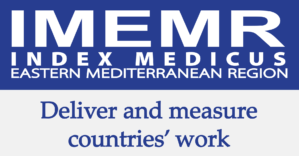Frequency of Leg Pain, Edema, and its Associated Factors among Nurses Working on Shift Duty in Private Tertiary Care Hospital, Karachi
DOI:
https://doi.org/10.53685/jshmdc.v4i1.145Keywords:
Lower extremity pain, Swelling, long-standing, Nursing Staff, Ziauddin Hospitals.Abstract
Background: Long-standing hours cause nurses to be at high risk of lower extremity pain and edema that can lead to varicose veins and deep venous thrombosis.
Objective: To determine the frequency of leg pain and edema and to determine the factors associated with leg pain and edema among nurses working in shifts on duty.
Methods: It was a cross-sectional study, carried out at Ziauddin Hospital Karachi on 242 male and female nurses. Non-probability purposive sampling method was used to access the participants. Data was collected on a questionnaire designed for the study, Pain numeric rating scale was used to record pain. A chi-square test of independence was applied to the association. The p-value ≤ 0.05 was considered statistically significant.
Results: Out of a total of 242 nurses, the majority 84 (56.4%) were male nurses and 65(43.6%) were female nurses. Lower extremity pain was reported in 55 % and leg edema in 22.53% of participants. A significant association between right leg pain, left leg pain, low extremity pain, and leg edema was found with gender; females were more prone as compared to male nurses (p<0.001). Furthermore, a significant association between pain and leg edema is established in participants who were on double duty. The highest number of participants with leg pain and edema were observed in the sub group with body weight of 68 kg and above. There was a significant association between leg edema and the body weight.
Conclusion: It is concluded that the frequency of leg pain and edema was much higher in nurses with body weight of 68kg and above and working double duty in a shift in a tertiary care private hospital.
References
Lee Y, Kim K, Kang S, Kim T, Jung J. Compression stocking length effects on edema, pain, and satisfaction in Nursing Students: A Pilot Randomized Trial. Healthcare. 2020; 8(2): 149-168. doi:10.339 0/healthcare8020149. DOI: https://doi.org/10.3390/healthcare8020149
Cho YR, Kim HS. The effects of elastic compression stockings on lower leg pain and edema in ward nurses. J Converg Inf Technol. 2018; 4(3): 275-285. doi: 10.17703/ JCCT.2018.4.3.275.
Assiri FF, Sofar SM, Babkair LA. Nurse’s knowledge after implementation of self-instructional module regarding the prevention and management strategy of varicose vein: A Scoping Review. Int J Novel Res Health Nurs. 2021; 8(3): 172-180.
Thamu Priyadarshini NT, Veni A, Assess the level of knowledge regarding the management of varicose veins among health care workers. Int J Res Med Surg Nurs. 2021; 3(2): 28-31 .doi:10.33545/surgicalnursi ng.2021.v3.i2a.69 DOI: https://doi.org/10.33545/surgicalnursing.2021.v3.i2a.69
Sugisawa R, Unno N, Saito T, Yamamoto N, Inuzuka K, Tanaka H, et al. Effects of compression stockings on the elevation of leg lymph pumping pressure and improvement of quality of life in healthy female volunteers: A randomized controlled trial. Lymphat Res Biol. 2016; 14(2): 95-103. doi:10.1089/lrb.2015.0045. DOI: https://doi.org/10.1089/lrb.2015.0045
Shrestha P, Karmacharya RM, Dahal S, Dhakal P, Bhandari N, Bade S. Patient literacy on varicose veins in cases presenting at the university hospital of Nepal subjected for surgical management of varicose veins. J Vasc Nurs. 2021; 39(1): 2-5. doi:10.1016/j. jvn.2021.01.002. DOI: https://doi.org/10.1016/j.jvn.2021.01.002
Youn YJ, Lee J. Chronic venous insufficiency and varicose veins of the lower extremities. Korean J Intern Med. 2019; 34(2): 269–283. doi:10.3904/kjim.2018. 230. DOI: https://doi.org/10.3904/kjim.2018.230
Blättler W, Mendoza E, Zollmann C, Bendix J, Amsler F. Homeostatic feelings–a novel explanation of vein symptoms derived from an experimental patient study. Vasa. 2019; 48(6): 492-501. doi:10.1024/0301-1526/a000807. DOI: https://doi.org/10.1024/0301-1526/a000807
Bozorgnejad M, Khani A, Pakzad M, Nodehi S. Effect of lifestyle and symptom intensity factors on the severity of lower limbs veins of varicose among nurses in north Khorasan Hospitals, Iran. J Patient Saf Qual Improve. 2021; 9(4): 235-243. doi:10.22038/PSJ.2021.60044.133
Yun MJ, Kim YK, Kang DM, Kim JE, Ha WC, Jung KY, et al. A study on prevalence and risk factors for varicose veins in nurses at a university hospital. Saf Health Work. 2018;9(1): 79-83. doi:10.1016/j.shaw.2017.08.005 DOI: https://doi.org/10.1016/j.shaw.2017.08.005
Shakya R, Karmacharya RM, Shrestha R, Shrestha A. Varicose veins and its risk factors among nurses at Dhulikhel hospital: a cross-sectional study. BMC nursing. 2020; 19(1): 1-7. doi:10.1186/s12912-020-0401-8 DOI: https://doi.org/10.1186/s12912-020-0401-8
Kamble PA, Patil NR. Prevalence of Restless Leg Syndrome in Nurses. Indian J Physiother Occup Ther. 2019; 13(3): 95-99. doi: 10.5958/0973-5674.2019.00099.6 DOI: https://doi.org/10.5958/0973-5674.2019.00097.2
Ilyas I, Ashfaq H.B. Prevalence of Varicose Veins among Teachers in Lahore, Pakistan. Pak J Physical Therapy. 2021; 4(3): doi:10.5 2229/pjpt.v4i3.1671.
Yusoff HM, Zawawi RA, Deros BM. Prevalence of lower limb pain and its associated factors among healthcare workers. J Mech Eng Sci. 2017; 11(3): 2930-2940. doi:10.15282/jmes.11.3.2017.13.0264 DOI: https://doi.org/10.15282/jmes.11.3.2017.13.0264
Santos EC, Andrade RD, Lopes SG, Vargas C. Prevalence of musculoskeletal pain in nursing professionals working in the orthopedic setting. Rev Dor. 2017; 18(4): 298-306. doi:10.5935/1806-0013.20170119 DOI: https://doi.org/10.5935/1806-0013.20170119
Tanzil S, Jamali T, Inam SN, Abbas A. Frequency and severity of low back pain among healthcare providers and associated factors in tertiary care, public hospital in Karachi. Occup Med Health Aff. 2019; 7(1): 1-5. doi:10.4172/2329-6879.1000285
Li J, Sommerich CM, Chipps E, Lavender SA, Stasny EA. A framework for studying risk factors for lower extremity musculoskeletal discomfort in nurses. Ergonomics; 2020; 1; 63(12): 1535-1550. doi:10.1080/00140139.2020.1807615 DOI: https://doi.org/10.1080/00140139.2020.1807615
Ilyas I, Ashfaq HB, ul Ain Q. Prevalence of Varicose Veins among Teachers in Lahore, Pakistan. Pakistan Journal of Physical Therapy (PJPT). 2021; 4(3). doi:10.52229/pj pt.v4i3.1671
Attach M, Raeisi S, Namvar M, Golabadi M. Association between shift working and musculoskeletal symptoms among nursing personnel. Iran J Nurs Midwifery Res. 2014; 19(3): 309-314.
Daniel W. Biostatistics: A Foundation for analysis in the health sciences, 7th Ed. Wiley. New York. 1999: 141-142.
Rauber Gallas S, Fontana RT. Biossegurança e a enfermagem nos cuidados clínicos: contribuições para a saúde do trabalhador. Rev Bras Enferm. 2010; 63(5): 786-792. doi10.1590/S003471672010000500015 DOI: https://doi.org/10.1590/S0034-71672010000500015
Semple R, Murley GS, Woodburn J, Turner DE. Tibialis posterior in health and disease: a review of structure and function with specific reference to electromyographic studies. J Foot Ankle Res. 2009; 2(1):1-8. doi: 10.1186/1757-1146-2-24. DOI: https://doi.org/10.1186/1757-1146-2-24
Getie K, Kahsay G, Kassaw A, Gomera G, Alamer A, Hailu T. Ankle and Foot Pain and Associated Factors Among Nurses at Ayder Comprehensive Specialized Hospital, Mekelle, Ethiopia: Cross-Sectional Study. J Pain Res. 2021;14: 83. doi:10.2147/IPR.S DOI: https://doi.org/10.2147/JPR.S283580
Choobineh A, Movahed M, Tabatabaie SH, Kumashiro M. Perceived demands and musculoskeletal disorders in operating room nurses of Shiraz city hospitals. Ind Health. 2010; 48(1): 74-84. doi:10.2486/indhealth.48.74 DOI: https://doi.org/10.2486/indhealth.48.74
Choobineh A, Rajaeefard A, Neghab M. Association between perceived demands and musculoskeletal disorders among hospital nurses of Shiraz University of Medical Sciences: a questionnaire survey. Int J Occup Saf Ergon. 2006; 12(4): 409-416. doi: 10.1080/10803548.2006.11076699 DOI: https://doi.org/10.1080/10803548.2006.11076699
Abedini R, Choobineh A, Hasanzadeh J. Musculoskeletal load assessment in hospital nurses with patient transfer activity. Int J Occup Hyg. 2013; 5(2): 39-45
Stolt M, Mikkola M, Suhonen R, Leino-Kilpi H. Nurses' perceptions of their foot health: implications for occupational health care. Workplace Health Saf. 2018; 66(3): 136-143. doi:10.1177/2165079917727011 DOI: https://doi.org/10.1177/2165079917727011
Barbosa RE, Assunção AÁ, de Araújo TM. Musculoskeletal pain among healthcare workers: An exploratory study on gender differences. Am J Ind Med. 2013; 56(10): 1201-1212. doi:10.1002/ajim.22215 DOI: https://doi.org/10.1002/ajim.22215
Chin DL, Nam S, Lee SJ. Occupational factors associated with obesity and leisure-time physical activity among nurses: A cross-sectional study. Int J Nurs Stud. 2016; 57: 60-69. doi:10.1016/j.ijnurstu.2016.01.009 DOI: https://doi.org/10.1016/j.ijnurstu.2016.01.009
Downloads
Published
How to Cite
Issue
Section
License
Copyright (c) 2023 Shakeel Rufan Khokhar, Badil, Raja

This work is licensed under a Creative Commons Attribution-NonCommercial 4.0 International License.
You are free to:
- Share — copy and redistribute the material in any medium or format
- Adapt — remix, transform, and build upon the material
- The licensor cannot revoke these freedoms as long as you follow the license terms.
Under the following terms:
-
Attribution — You must give appropriate credit, provide a link to the license, and indicate if changes were made. You may do so in any reasonable manner, but not in any way that suggests the licensor endorses you or your use.
-
Non Commercial — You may not use the material for commercial purposes.
-
No additional restrictions — You may not apply legal terms or technological measures that legally restrict others from doing anything the license permits.




















